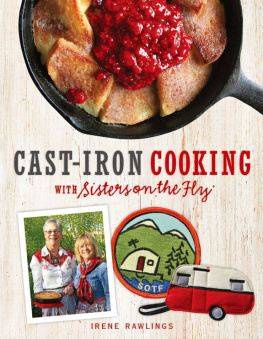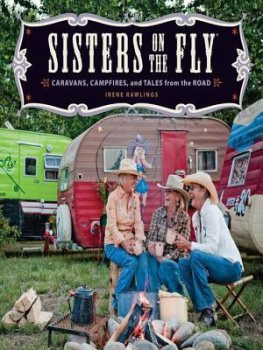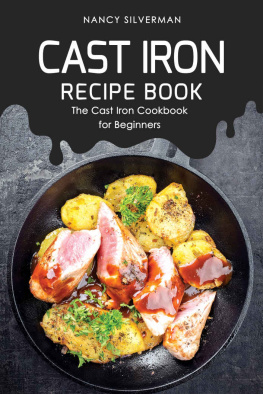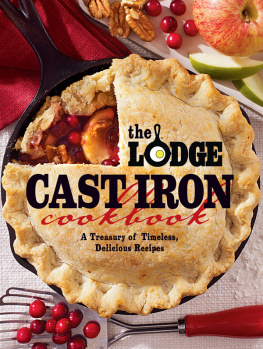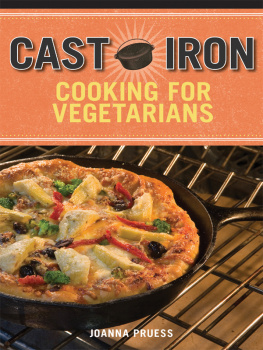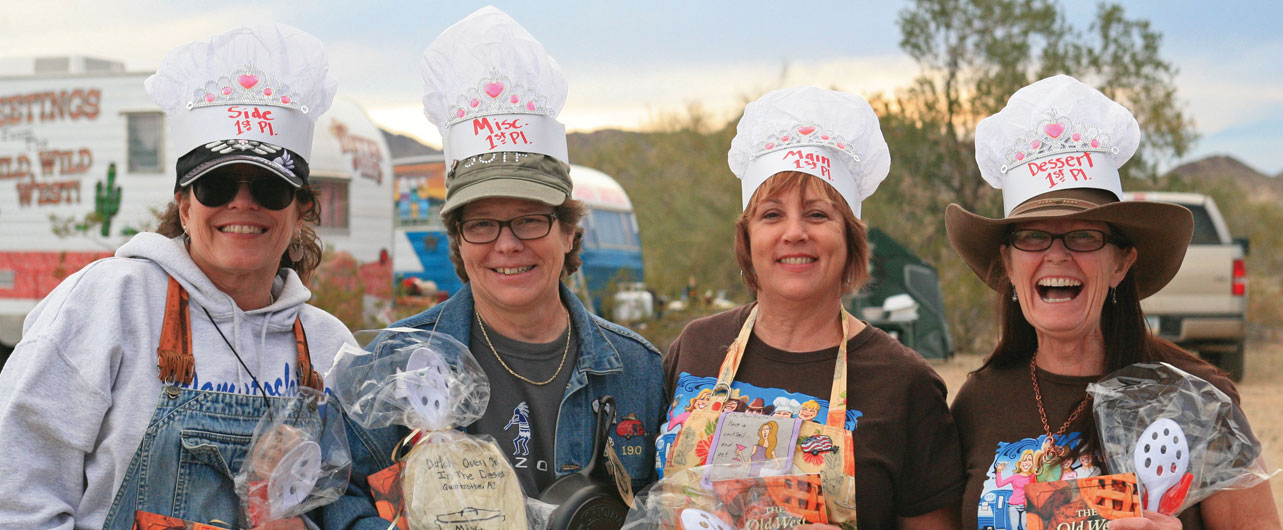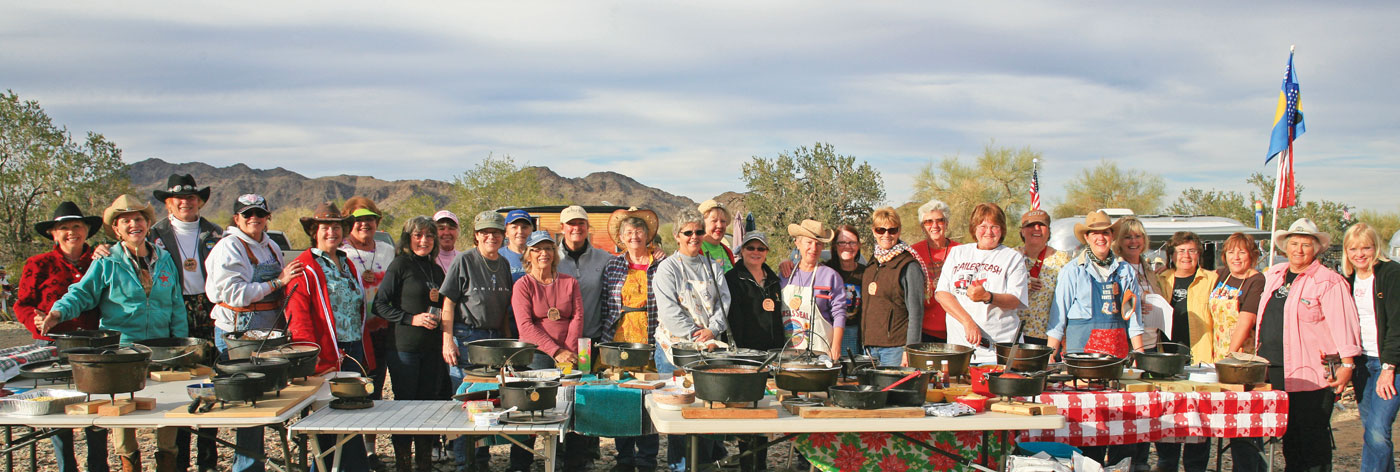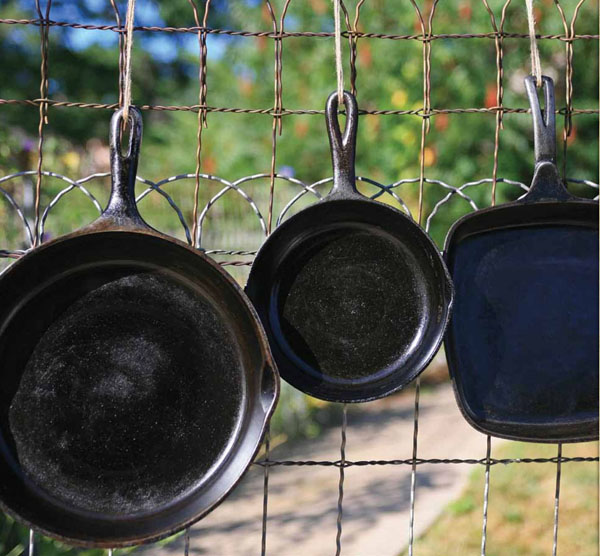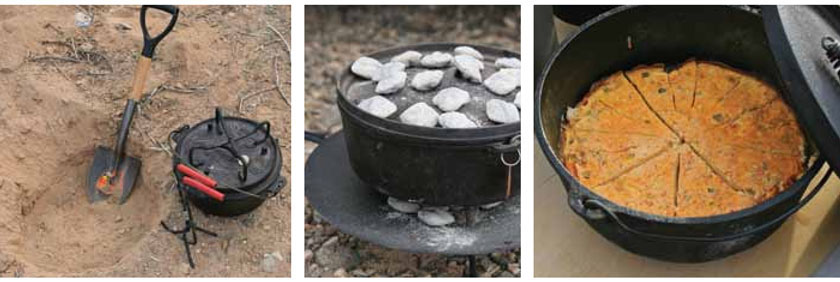ABOUT THE AUTHOR
Author, editor, curator, and art reviewer, Irene Rawlings hosts an award-winning radio show syndicated throughout the Rocky Mountain West. She is also the author of
Portable Houses,The Clothesline, andSisters on the Fly . ACKNOWLEDGMENTS
Many thanks to Maurrie, Becky, the amazing Mazie (who really knows how to fry a trout!), and all of the fabulous, independent, gorgeous, warm-hearted, fearless Sisters on the Fly who shared their favorite cast-iron recipes with me. The Dutch Oven Divas rock! Thank you Elaine Block for all your help. The Dutch Oven Queens also rock! And many thanks also to all of those Sisters who dont cook but are happy to be the designated tasters. You are all dear friends and true sisters of my heart.
A big thank you to photographer David Mister Sister Foxhoven and the many shutterbug Sisters who shared photographs from the fun campouts, food festivals, Dutch oven cook-offs and, well, some other pretty incredible shenanigansfrom coast to coast and in Canada, Australia, and New Zealand. Special thanks to photographers Cat Geiger, Ceci Bennett, Juli Thorson, G!, and Peggy Richmond. Mega-thanks to my wonderful sister-in-law, Martha Foxhoven, who good-heartedly loaned me her computer when mine suffered a meltdownjust as I was finishing this book! Lori Arosteguy, owner of Cake (cakedenver.com), followed the Sisterss fabulous recipes to create the awesome cakes, pies, and pastries pictured in the book. She is a great pastry chef and an even better friend. Thank you, dear Lori. Many thanks also to good friend Corinne Joy Brown, who graciously loaned pieces from her notable western-themed dinnerware collection for our photo shoots.
Finally, Id like to thank my wonderful editor at Andrews McMeel, Lane Butler, who dealt with deadlinesboth those I hit and those I missedwith good humor and an amazing serenity. And to art director Holly Ogden, who took all our food photos and made them look good enough to eat. It has been a fun and delicious journey... one that will forever be measured by food, adventures shared, and friends gained.
one CAST-IRON COLLEGE A little homely, a little old-fashioned, cast-iron pots fell out of favor for many years, replaced by more streamlined and sleek aluminum and Teflon-coated cookware. Now cast-iron frying pans and Dutch ovens are making their way back into the kitchen as both home cooks and professional chefs realize the many benefits of cooking in cast iron.
Cast iron absorbs heat slowly and distributes it evenly and consistentlywith none of the hot spots that can occur with other cookware. In addition, cast iron is stick-resistant and requires very little additional oil or butter. Cast-iron pans can be used on top of the stove, in the oven, or over a campfire. They are easy to clean, last forever, and get better with age. They are good for sauting and stir-frying at high heat as well as simmering and caramelizing at very low heat. HOW TO SEASON AND CARE FOR CAST IRON First check to see if the pan is preseasoned.
If you have a modern cast-iron pot, pan, or Dutch oven, it may already be seasoned. If you have an antique, youll have to go through the following simple steps:
- Clean with a steel wool soap pad and hot water.
- Wash with a detergent and then dry.
- Using a paper towel, spread several tablespoons of melted shortening or vegetable oil into the pan, making sure to coat not only the bottom but also the sides.
- Put the pan in a 400F oven for about an hour. Turn off the oven. Leave the pan in the oven to cool.
- Once the pan is seasoned, dont wash it with soap or detergent or put it into the dishwasher. To clean, just use hot water and a plastic scrubber.
- Dry thoroughly by putting the pan on a burner on low heat, then turn off the heat and leave the pan on the burner to cool.
- If you burn something in your cast-iron pan (a sugary syrup, for example), build a big fire in an outdoor grill or put together a campfire (if youre in the woods and there are no fire restrictions) and put the pan into the fire. This will turn the food residue to ash.
Then, simply reseason.
- Right after cooking is the best time to clean your cast iron. Some Sisters suggest washing with a little water, soap, and a stiff nonmetal brush. Others say to skip the soap. Whatever you do, dont scrub very hard. After it is dry and while it is still hot, wipe all surfaces down with oil.
- Store cast iron in a cool, dry place with a dish towel covering the cooking surface. Do not store a Dutch oven with the lid on.
WHY SEASON YOUR CAST IRON? Cast iron has tiny little pores and microscopic valleys as part of its surface.
It is a characteristic of the material. Seasoning cast iron evens out the surface, creating a patina that keeps food from sticking. And the more you use it, the smoother and more nonstick the surface becomes. SOME CAST-IRON DOS AND DONTS
- Always preheat your cast iron before cooking in it.
- Dont put cold water into hot cast iron, or the cast iron will crack.
- Dont store food in a cast-iron pan, because the acid in the food will break down the seasoning and the food will taste metallic.
- Dont boil water in cast iron or let cast iron sit in water. It breaks down the seasoning and can cause your cast iron to rust.
- If your cast iron gets some light rust spots, scour them with steel wool. Wash, dry, and reseason.
DUTCH OVEN COOKING Before anyone ever even heard of a Crock-Pot, our grandmothers used Dutch ovens that were, were told, developed in Holland in the early 1700s.
More history: There are reports that George Washingtons troops used Dutch ovens during the Revolutionary War and, from there, the versatile portable ovens traveled west with the homesteaders, miners, and ranchers. They were used to make sourdough bread during the California gold rush of 1849, and chuck wagon cooks used them during long cattle drivesfrom Texas and Oklahoma to the Chicago stockyards.
| SLOW COOKER | DUTCH OVEN |
| 12 hours/Low | 3 hours/325F |
| 10 hours/Low | hours/325F |
| 8 hours/Low | 2 hours/325F |
| 6 hours/Low | hours/325F |
| 5 hours/Low | 1 hour, 15 min./325F |
| 4 hours/Low | 1 hour/325F |
| 4 hours/High | 2 hours/325F |
| 3 hours/Low | 45 min./325F |
| 3 hours/High | hours/325F |
| 2 hours/Low | 30 min./325F |
| 2 hours/High | 1 hour/325F |
| 1 hour/Low | 15 min./325F |
| 1 hour/High | 30 min./325F |
Source: Originally published by Kathleen Purvis, food editor at the Charlotte Observer,
and refined by Rick Mansfield (www.cookingincastiron.com)Next page
